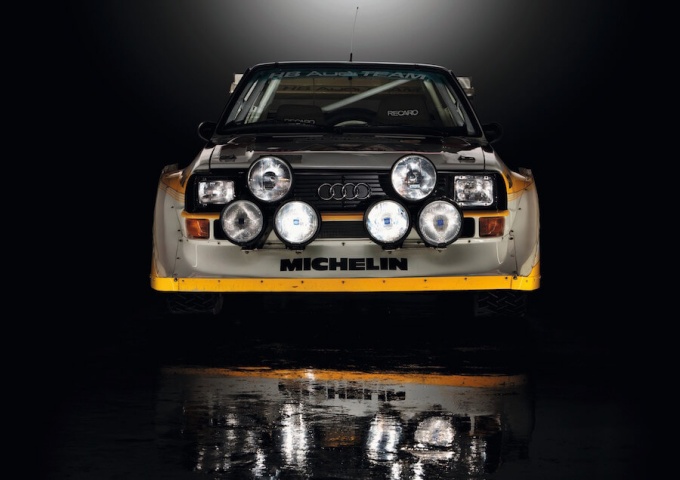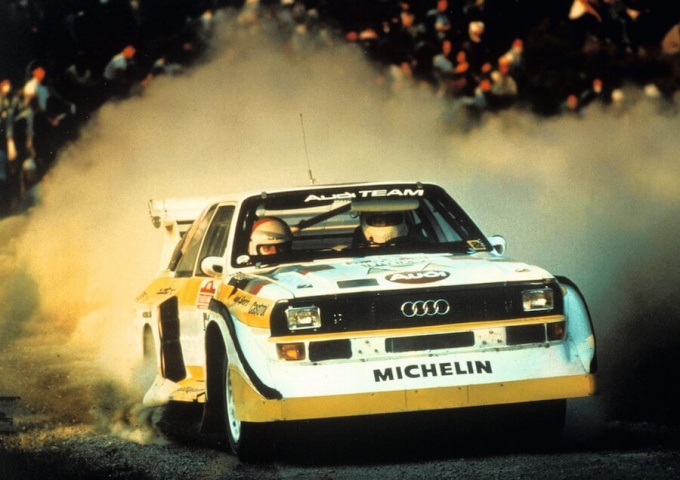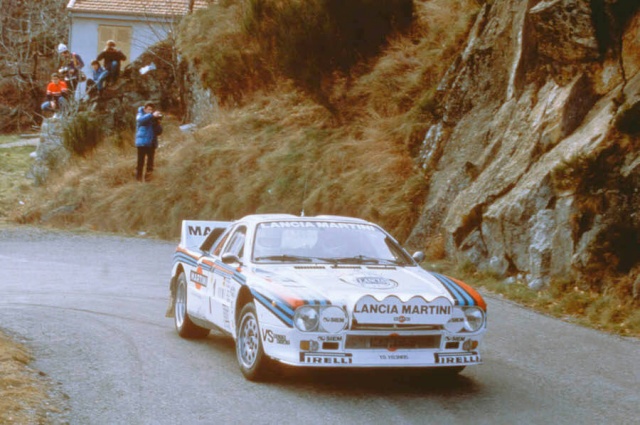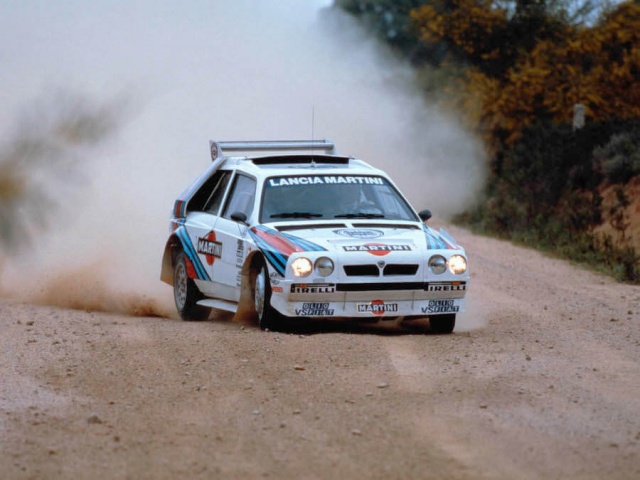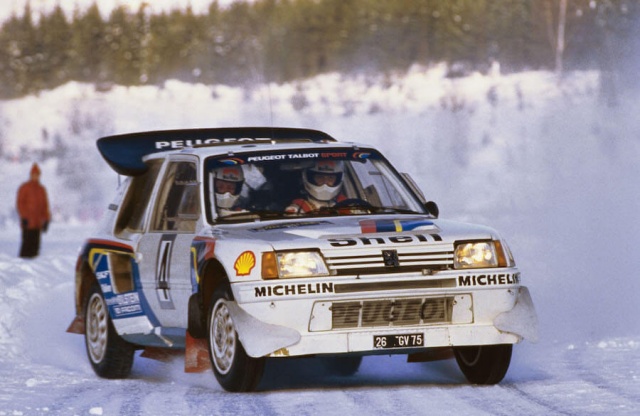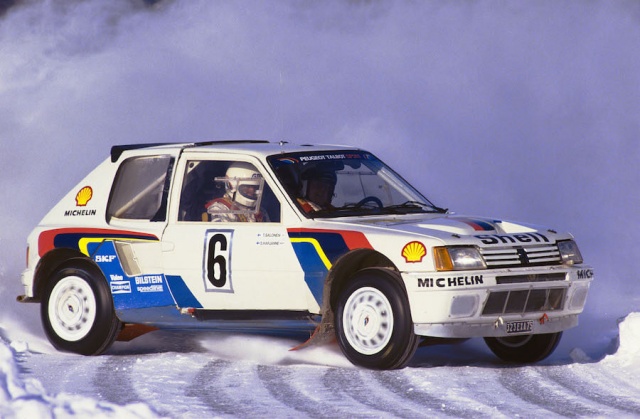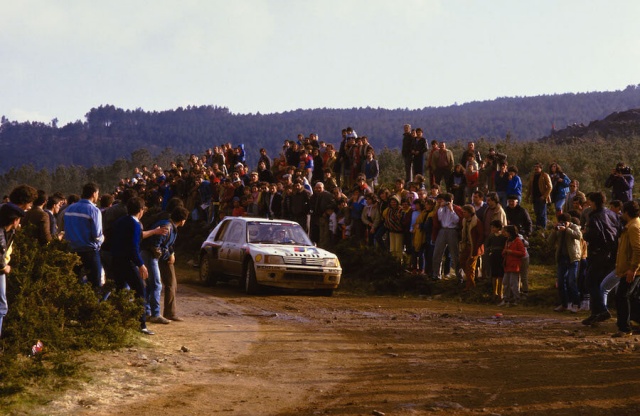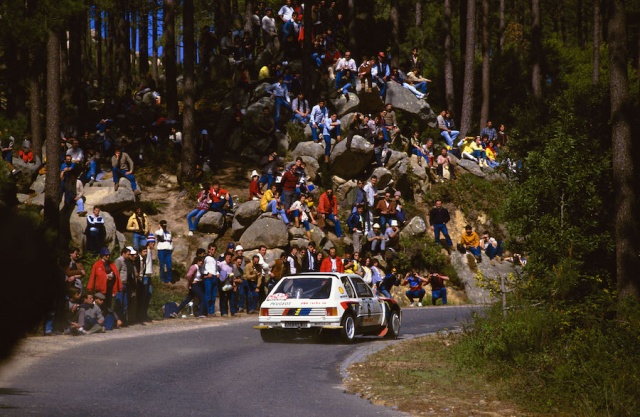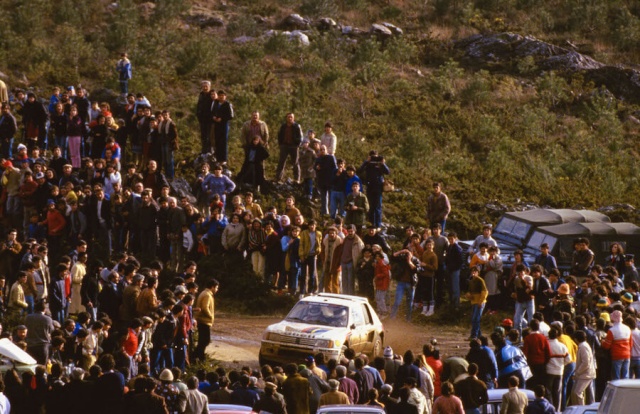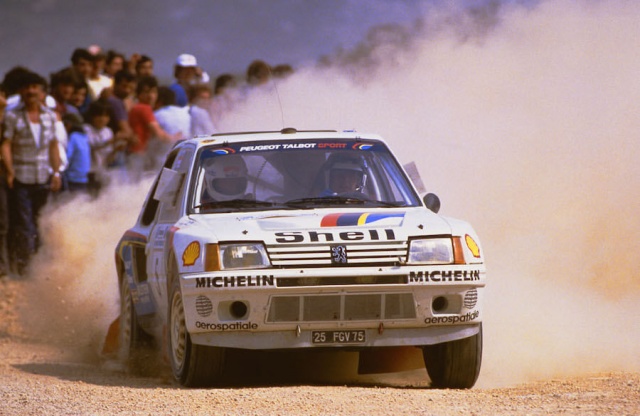1985 saw the debut of more new challengers. Things were starting to get out of hand, and drivers found themselves at their limits just trying to keep the cars on the road.
This was going to be Ari’s year. The form shown by the Finnish maestro since the debut of the 205 T16 meant that the championship would surely be a foregone conclusion. Audi were still doggedly trying to extract pace out of the front-engined Sport Quattro at the behest of their marketing department. Lancia were biding time with the 037 until its all-wheel drive replacement arrived later in the year. The other manufacturers continued to play bit-parts with outdated machinery. The Peugeot was by far and away the best car, and even in-house opposition (in the form of chain-smoking librarian-lookalike Timo Salonen) didn’t appear to be a serious threat.
The first two events of the year certainly adhered to that theory. Despite being minutes behind at one point on the Monte Carlo Rally due to a navigational error, Vatanen glided through to win both there and on the next rally in Sweden. Ari was at the point in his career that every driver dreams about; the car seemed to move as an extension of him, and everything that he did in terms of driving and setup was just right. As the famously articulate Finn said himself: ‘’ If I was able to play piano I would play like a maestro with my eyes closed. But you need a good piano. And Group B was a perfect piano’’.
However, that man Salonen was quietly racking up points, and won on the next event in Portugal. Future champion Miki Biasion lead for Lancia after the first day’s tarmac stages around Sintra, but the all-wheel drive cars shot past when the roads switched to gravel. Damage from a puncture led to Vatanen’s retirement with suspension failure, and weaknesses in the 205’s armour showed as Salonen’s mechanics had to replace a steering rack at a roadside service, completing the job with seconds to spare. Audi’s Walter Rohrl had over six minutes in hand going into the final day, but gearbox issues handed the win to a fortunate Salonen. However, the main theme of the event was the behaviour of the spectators, numbering in their hundreds of thousands and standing closer to the speeding cars than ever before. Looking back at videos of the event now is harrowing, especially with the knowledge of what was to occur 12 months later…
The Safari came and went, won by a young moustachioed Finn named Juha Kankkunen in the indefatigable Celica. The next event in Corsica was only four stages old before disaster came knocking. There was a sense of the inevitable occurring as Attilio Bettega’s Lancia was removed from the tree it had struck. Attillio was killed instantly, his 037 ill-equipped to deal with the impact of the crash. Miraculously, his co-driver Maurizio Perissinot walked away unscathed, but as we now know, neither the teams nor the FIA did do enough at the time to prevent any further deaths. Safety standards were rudimentary at best, and the cars continued their inexorable descent into undriveable death traps as power figures rose higher and higher.
Ari Vatanen’s championship bid ended a couple of rallies later in Argentina when his Peugeot somersaulted end-over-end at nearly 200km/h. His seat broke during the crash and the Finn suffered severe internal injuries, which would take 18 months to fully recover from. Were it not for the presence of the Peugeot team helicopter, he would have almost certainly died that day, and the realisation of that fact hit him hard as he battled with depression throughout his recovery. Ari would never challenge for a championship again, but remains philosophical to this day about the incident and would go on to win many endurance rallies and even become a Member of the European Parliament.
Timo Salonen and Peugeot would go on from here to clinch both the drivers’ and manufacturers’ titles, so the other teams focused on trying out various solutions in an attempt to halt the Lion’s domination for 1986. The first of those appeared in Finland in the form of Audi’s bewinged Quattro S1. Boasting 500hp from the outset, water-cooled brakes and one of the most iconic noises ever heard on a rally stage, Walter Rohrl went on to dominate the Sanremo Rally with it, a kick in the teeth for Lancia on its home rally. The new Quattro bristled with innovations such as a dual-clutch gearbox (the forerunner of today’s DSG transmissions) and an anti-lag system for the turbocharger, but was still handicapped by its weight distribution thanks to the cumbersome five-cylinder engine hanging out over the front axle. A mid-engined Quattro was in development in the utmost secrecy behind the shroud of the Iron Curtain, but events over the following few months would ensure that it would never drive a stage in anger…
Lancia had a pretty torrid year, with young star Henri Toivonen breaking three vertebrae in a European Championship round early in the season and Markku ‘’Maximum Attack’’ Alen growing ever more frustrated at the 037’s shortcomings. Markku had even signed a Peugeot contract for 1986 after endless delays to the new 038 project left him disheartened, but intervention from HQ stopped him from switching before it became a reality. With the all-encompassing coverage that comes with the advent of the internet and social media in recent times, it’s difficult to imagine that most of the rallying world had not seen Lancia’s all-wheel drive challenger until it rocked up at scrutineering for the 1985 RAC Rally, the last round of the year. It still seems futuristic now, but the Delta S4 must have looked like an alien spacecraft back then. Turbocharged AND supercharged, the Kevlar-bodied spaceframe missile was a brutal riposte to Peugeot’s elegant 205. It pushed the rules to the limit and then some, with scant regard for the crew’s safety as they sat strapped in directly above the fuel tank. Toivonen would lead an Italian 1-2 on the RAC, and the stage was set for a Lancia and Peugeot duel for 1986.
Coming home third on 1985’s final round was Tony Pond in Austin Rover’s boxy new MG Metro 6R4. Developed with input from Williams Grand Prix Engineering, it made its international debut on our very own Donegal Rally, where it proceeded to blitz all comers until mechanical trouble side-lined it. The glorious sound of the naturally-aspirated 3.0-litre V6 was its strongest point though, as it was obsolete on the world stage almost before it had turned a wheel. The turbo cars were now pushing out over 500hp, and development showed no signs of abating. Teams employed masseurs to stretch and massage weary bodies at every service halt, as drivers found it increasingly difficult to control the bucking broncos under their right feet. Co-drivers struggled to read pacenotes quick enough to describe the road ahead, and spectators formed a human tunnel on almost every corner. The spectacle had never been higher, and neither had the danger. 1986 would turn out to be the most troubled year the sport had ever seen.


